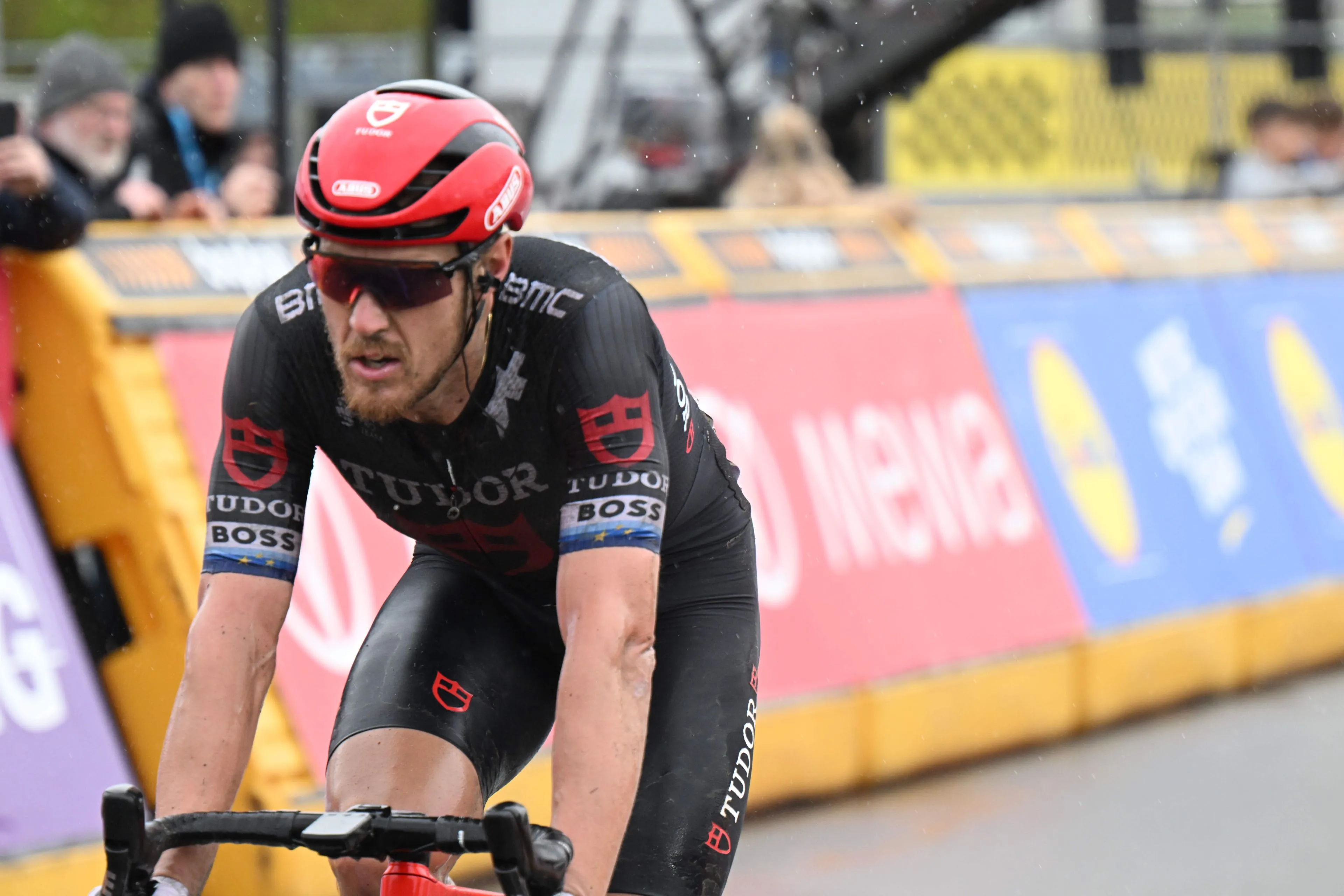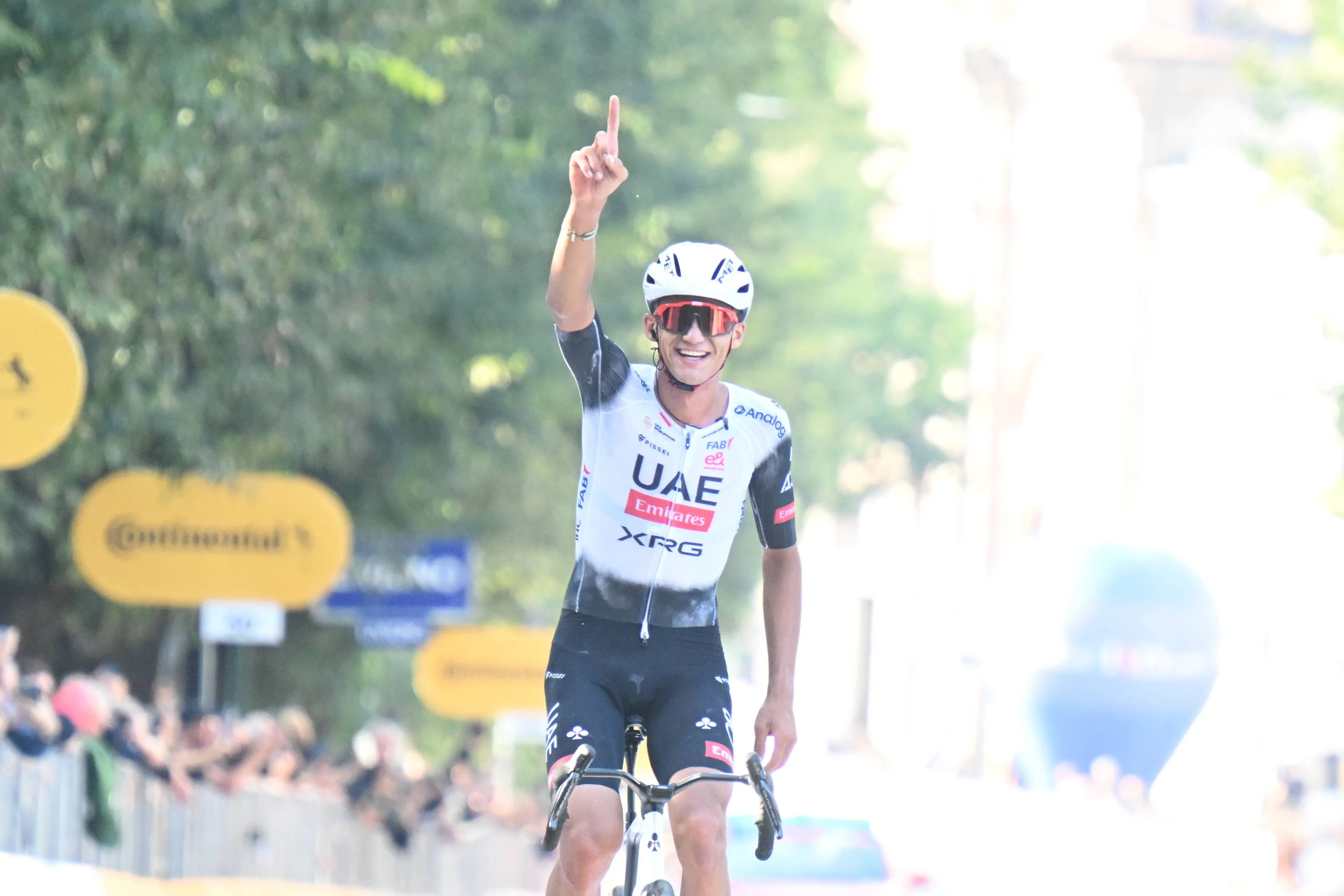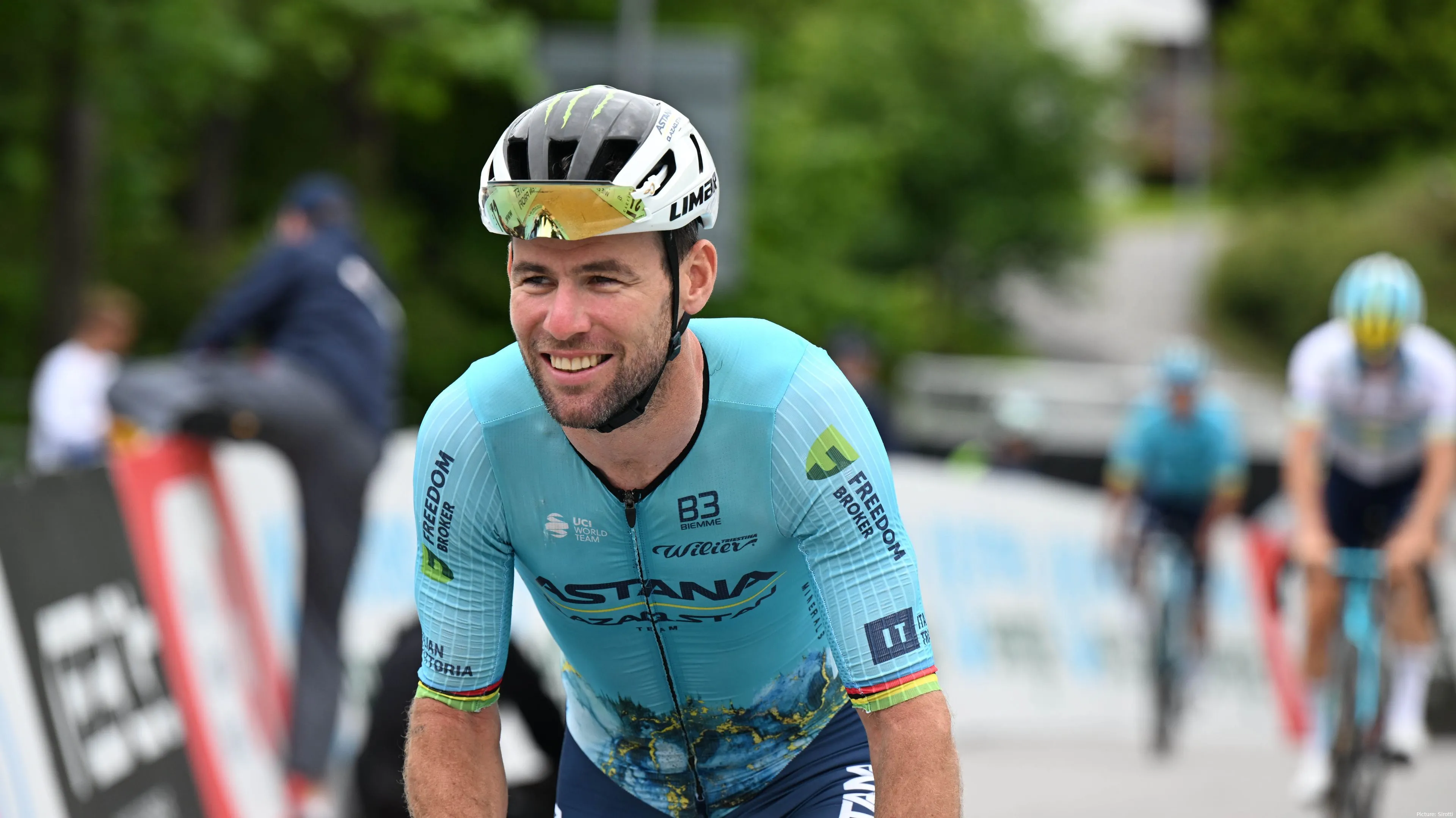
Who is Mark Cavendish?
Mark Cavendish is a former professional cyclist and one of the most successful sprinters of all time. He is best known for his 35 wins at the Tour de France which makes him the rider who has won the most in cycling's biggest event; but has also won 16 stages at the Giro d'Italia, become World Champion in 2011, won Milano-Sanremo in 2009 and carries a palmarès with over 150 wins.
Name: Mark Cavendish
Birthday: 21 May 1985
Birthplace: Douglas, Great Britain
Turned Pro: 2005
Height: 1.75m
Birthday: 21 May 1985
Birthplace: Douglas, Great Britain
Turned Pro: 2005
Height: 1.75m
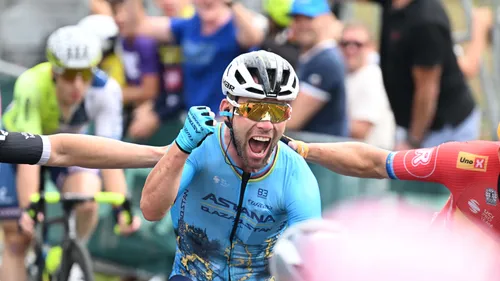
Mark Cavendish wins his 35th stage in the Tour de France, 2024 Tour de France
Mark Cavendish was born on May 21, 1985 in Douglas, Isle of Man, Great Britain. He had a long career on the road in which he became one of the most famous and successful sprinters in the history of cycling, spanning three different decades and different teams.
Besides the road, Cavendish is also a successful track cyclist with 3 world titles in the Madison along with Rob Hayles and Bradley Wiggins, respectively. He has said in the past that his maximum power output was 1580 watts. Cavendish is married to model Peta Todd and the couple has five children.
The Manxman turned pro in 2005 with Team Sparkasse where he took his first steps into the pro world - albeit still as an under-23 rider. That year, as a 20-year-old, he recorded his first pro victory in the Tour de Berlin, at a time when riders of that age were rarely more than mere domestiques. In 2006 , he had great success for the German team, winning stages in the Thüringen-Rundfahrt, Tour de Berlin and the Course Cycliste de Solidarnosc, which led to his being hired as a trainee with the T-Mobile Team, which was one of the best teams in the world. Although he did not win, he won the points classification at the Tour of Britain and was an obvious rider to contract.
From 2007 to 2011, he became one of the faces of the T-Mobile team, later called Team Columbia and Team HTC - High Road. In his first season, he won the Scheldeprijs, two stages in the 4 Jours du Dunkerque and the Volta a Catalunya, in the Star Elektrotoer, Post Danmark Rundt, Eneco Tour, Tour of Britain and Circuit Franco-Belge, quickly establishing himself as one of the world's fastest sprinters. Although he dropped out early, he also made his debut in the Tour de France, where he gained experience that would greatly benefit him later in his career.
Read also
In 2008 , he made his Giro d'Italia debut after winning stages in the Three Days of De Panne-Koksijde, Tour de Romandie and Scheldeprijs, and it was a successful series as Cavendish won stages 4 and 13, mass sprints he specialized in. Soon after, he began the Tour de France, where he won a total of 4 stages, his first in a sprint to Châtearoux, where he began to build a legacy. Later in the season, he would win six more stages in the Tour of Ireland and the Tour of Missouri.
By 2009 , Cavendish had already established himself in a man-for-man position in the peloton. His victory in Milano-Sanremo came as a huge career achievement, winning his first - and only - monument on his first attempt. In the spring, Cavendish had eight wins, in the Giro d'Italia he won two stages, followed by another two in the Tour de Suisse, and in the Tour de France he won no fewer than six stages, something that has become virtually impossible in modern cycling. Nevertheless, he did not win the points classification, but added 4 more victories until the end of the year.
In 2010 , Cavendish decided not to ride the Giro and won the Volta a Catalunya, Tour de Romandie and Tour of California before returning to the Tour. It was a less dominant year until there, but in the Tour he again took advantage of the large number of flat stages and a very strong leadout to add another 5 stages to his record. Cavendish then made his debut in the Vuelta a Espana, where he finished the race with 3 more stage wins under his belt.
In 2011, he returned to the Giro d'Italia to ride the first half of the race, where he picked up two wins before rejoining the Tour de France where he won five stages and wore the green jersey in Paris. Later in the year, he captured another of the biggest successes of his career when he became world champion in Copenhagen on a World Cup course that favored pure sprinters, where he beat Matthew Goss and his rival André Greipel for the win.
In 2012 , he signed with Britain's Team Sky, where he took several wins early in the season and 3 in the Giro d'Italia. He rode the Tour, in which the team became famous and began half a decade of dominance in the Grand Tours, and he had to help the team achieve that goal, but he managed to take three stage wins himself, including the final in Paris. The rest of the year he won four more stages.
In 2013 , he quickly made the move to Omega Pharma - Quick-Step, a team that has traditionally always put a lot of emphasis on sprints, which is still the case today. He won the Tour of Qatar in addition to 4 stages famously, scoring a few more victories before riding the Giro d'Italia where he won the first stage and donned the pink jersey. Here Cavendish won 5 stages and the points classification, followed by the British national title and 2 more stages in the Tour de France.
In 2014 he continued to win, but he focused on the Tour de France which had its Grand Depart in Britain with a first stage suitable for sprinters. He was in the race for victory, but a crash almost within sight of the line - caused by a collision with Simon Gerrans - forced him to abandon the race the next morning. In 2015, he had won 12 stages until the Tour de France, where he added 1 more victory to his big list. Cavendish left the Belgian team at the end of the season and joined South African Team Dimension in 2016, where he sought to rebuild the lead-out that made him successful with Mark Renshaw and Bernhard Eisel several years ago.
He managed to keep his flow going, winning several stages during the year and picking up 4 wins in the Tour de France to move closer to the record of Eddy Merkcx who had 34 wins in the race. Cavendish came very close to a second rainbow jersey later in the year by finishing second in Doha, Qatar, behind only Peter Sagan. In 2017 , he was diagnosed with mononucleosis in April but returned to the Tour de France, where he dropped out after stage 4 after falling in a bunch sprint following a collision this time with Peter Sagan. He won only once this year and began a slow decline in his career.
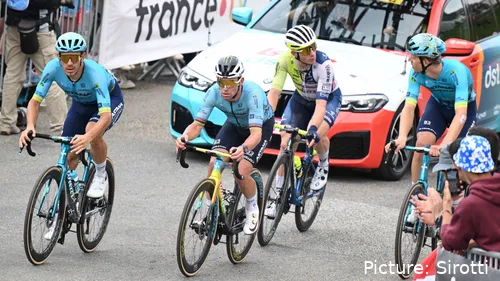
Mark Cavendish
The scenario was the same in 2018 , when he won early in the year at the Dubai Tour, but never again. In the Tour de France, he finished outside the time limit on stage 11 and his season ended shortly thereafter. The situation became even more complicated in 2019, as Cavendish did not win all year and was also absent from all Grand Tours because he did not show the form needed to ride over mountainous terrain.
In 2020, McLaren took the risk of contracting Cavendish for a year on the World Tour. It was an unexpected move, but also one that proved to be unsuccessful, as he did not participate in a single Grand Tour and failed to get into the Top 10 all year. The chances of breaking Eddy Merckx's record in the Tour de France seemed over, and so did his career. So it came as a big surprise when Cavendish was offered a contract with Quick-Step Alpha Vinyl Team in 2021 , the only team that could bring him back to his best.
With Fabio Jakobsen recovering from injury and uncertain to continue his career, Cavendish was a last-minute addition to fill the space. He showed speed and at the Tour of Turkey he returned to his winning ways and won 4 times. Then he picked up another triumph in the Baloise Belgium Tour. Cavendish returned to the Tour as Quick-Step's leader in the sprints and won 4 more stages matching Merckx's record of 34 wins.
In 2022 , he rejoined Quick-Step, a move not initially planned, but Cavendish stayed with the Belgian team. He won the now flat Milano-Torino race and won a stage at the Giro d'Italia, where he was given the role of leading the team in the sprints. He won the national championships while waiting to be selected for the Tour de France, but the spot was filled by Fabio Jakobsen.
Cavendish was rumored to be moving to B&B Hotels-KTM at the end of the season, but when the team disbanded, so did his contract. However, he found a last-minute solution to stay in the World Tour because Astana Qazaqstan Team had the budget (because Miguel Ángel López had been fired) and signed him. A move without pressure both sides said from the start. A third place in the UAE Tour was a promising sign, but throughout the spring the Manxman did not have the legs to ride races with climbs. He still finished third in Scheldeprijs, but his form really started to build during the Giro d'Italia. There he climbed very well in a rainy and tough stage 10 and finished third in stage 11.
He was present and after surviving the brutal Alps, Cavendish got his reward. On the final day in Rome, Cavendish was the strongest in the final sprint and took a very popular victory that marked his comeback - and his first win with the Kazakh team. The Tour de France dream ignited once again. He attended the start of the Grand Boucle, experimented in a few sprints and his chance came in stage 7, where he got closer and closer to the line and victory, but was overtaken very close by Jasper Philipsen. He crashed the next day and suffered a collarbone fracture.
This almost seemed to dramatically end his season and career. Cavendish announced his retirement during the Giro d'Italia, but after this premature departure from the Tour, there were many voices calling for the sprinter to continue for another year. Astana was fully prepared to re-contract the Manxman. The rumors circulated for months until he finally officially confirmed his extension in early October, another year with the Astana team with new leaders and a coach from his Soudal - Quick-Step days, and former leader Mark Renshaw as DS.
Into 2024 there was one goal: Win a Tour de France stage. A lot of pressure on one specific race... The Manxman underwent changes in his preparation including a lot more altitude training; whilst the team signed his former leadout man Mark Renshaw as a DS; Quick-Step coach Vasilis Anastopoulos; and former leadout men during 2021 as well at Quick-Step Michael Morkov and Davide Ballerini. It was a complete change in mindset, and a complete focus on Cavendish's ultimate goal.
After several weeks at altitude, Cavendish started his season at the Tour Colombia and also won his first race of the season here, beating Fernando Gaviria on stage 4. However as he continued racing throughout the spring, he struggled to get results and his difficulties climbing became very obvious. At the modest-level Tour of Turkey these issues were clear as water as he failed to contest any of the eight stages. At the Tour de Hongrie in May however he returned to a strong level, winning stage 2 ahead of Dylan Groenewegen.
He raced the Tour de Suisse, a very mountainous race, in preparation for the Tour which would be very hard. Cavendish missed the first sprint on stage 3 to Torino but in stage 5 he achieved ultimate history, winning for the 35th time at the Tour de France in Saint-Vulbas. A small town witnessed history of the sport and the Manxman was widely celebrated all throughout the peloton. He completed the race but was ultimately not able to contest for a top result in any other stage.
claps 0visitors 0
Just in
Popular news
Latest comments
- Not sure you can say that someone as talented and successful as him has had bad luck, but between coming along right after the two titans and now this, his is a career cut short. Perhaps he can transition to a different role in the sport, but in any case I wish him well.MidnightRider08-01-2026
- I doubt it. This blows a hole in their ranks.mobk08-01-2026
- For a while there, Eli was the best of the rest in cyclocross behind Mathieu and Wout. It must be tough to be forced to retire early due to medical issues, but good health trumps everything else. I wish him the best in his future endeavors.
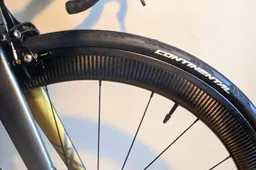 santiagobenites08-01-2026
santiagobenites08-01-2026 - however you frame it, it seems that they asked more from Ayuso (who obviously did not deliver the needed support) than they are asking from del Torro ... who - according to this quote - just needs to show up and can then ride however he likes.Ketterechts08-01-2026
- I agree that Ayuso was wrong in doing what he did at the tour, but we don't know everything behind the feud unless they all say honestly what went wrong. If he us such a rat and traitor, which it's a bit harsh, then what is to be said about Soler when he was with Movistar and didn't want to ride for Mas? I was disappointed, yes, but realize riders also have goals, and right now, UAE is all about their golden boy.Colnago-fan08-01-2026
- Yes, still sad though, that he's retiring. Anyway, best wishes for his new chaptermhfrvz08-01-2026
- has he been pushed out by the team ?
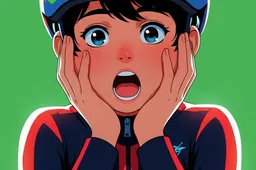 ChillingCyclist08-01-2026
ChillingCyclist08-01-2026 - Jesus was crusified at age 33. Go out BIG, not like Froome; a good cyclist but people are now laughing and making fun of Froomey. He just doesn't know when to quit. I understand Simon Yates. Who still remembers, Pogi the GOAT also talked about retiring early? He had enough of the BS that comes with professional sports, especially cycling.NikkoNicco08-01-2026
- I think the regret is greater for Cian than JV.mij08-01-2026
- Ayuso was a rat...a traitor. Lidli Trek will get rid of him in the next two years. Once a traitor, always a traitor. He betrayed his UAE team and Pogacar.NikkoNicco08-01-2026
Loading
Write a comment

